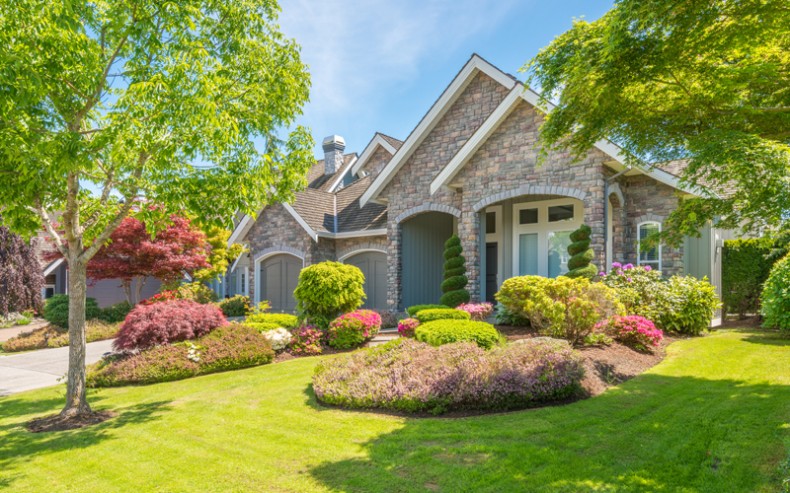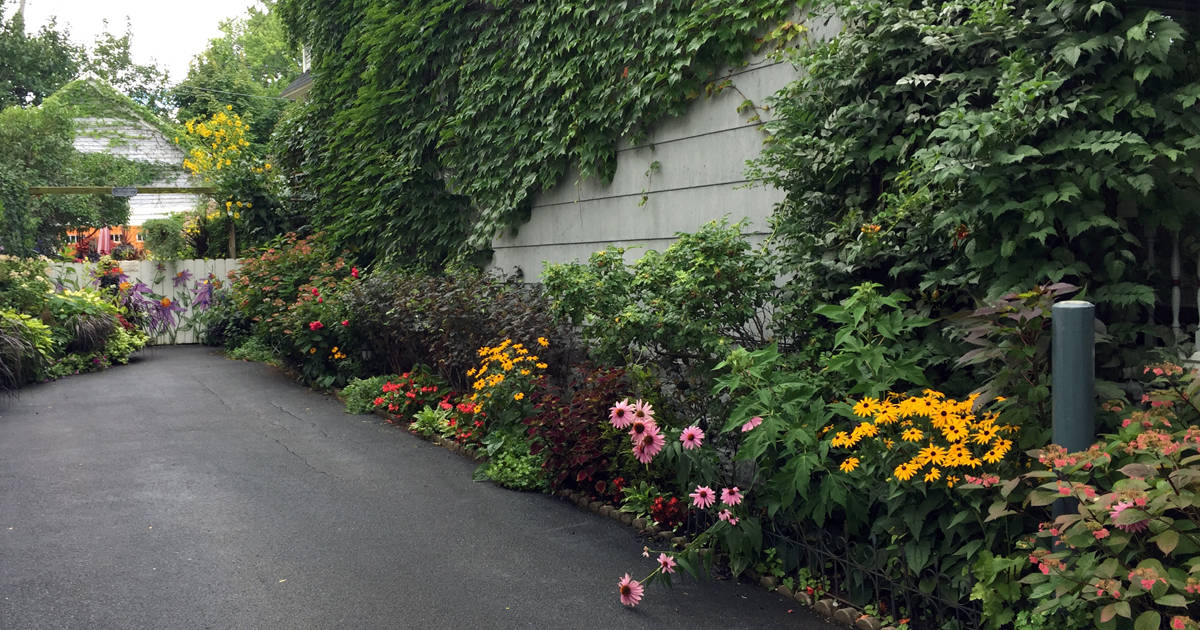Some Of Hilton Head Landscapes
Table of ContentsFascination About Hilton Head LandscapesThe Hilton Head Landscapes IdeasNot known Factual Statements About Hilton Head Landscapes The smart Trick of Hilton Head Landscapes That Nobody is DiscussingFacts About Hilton Head Landscapes RevealedHilton Head Landscapes Things To Know Before You BuyNot known Facts About Hilton Head LandscapesLittle Known Questions About Hilton Head Landscapes.
Form compatibility is also a major part of unity in designone or 2 noticeably different kinds benefit comparison and focus, but usually all other forms must have some resemblances for an unified look. Appearance describes exactly how rugged or fine the surface area of the plant or hardscape material feels and/or looks.

Examples of plants with coarse appearance consist of philodendrons, agaves, bromeliads, hollies, palms, and hydrangeas. Characteristics that create fine structure include small foliage; thin, strappy fallen leaves (grasses) or tall, slim stems; small, thick twigs and tiny branches; long stems (vines); and little, delicate flowers.
Rumored Buzz on Hilton Head Landscapes
A lot of plants are average appearance, in that they can not be referred to as having either crude or great texture. They are defined by medium-sized fallen leaves with easy forms and smooth edges. The average-sized branches are not largely spaced neither widely spaced, and the general kind is commonly rounded or mounding. Medium-textured plants function as a background to link and link the coarse- and fine-textured plants.

To make a room feel smaller, put the rugged structures along the outer perimeter and the great structures closest to the visitor. The detail of the crude appearance makes the plants appear closer and makes the area feel smaller sized. The perceived texture of plants can likewise alter with the distance from the plant.
The Best Guide To Hilton Head Landscapes
Vibrant colors increase the comparison and make the appearance appear coarser, while soft colors can flatten appearance. Hardscape with a rugged texturesuch as really rough rocks and strong, large timberstends to make all plant material appear more medium textured. Developers usually create an appearance research (Figure 8) on paper to help decide the setup of plant materials.
Shade in plant product and hardscape adds interest and range to the landscape. Color is the most conspicuous aspect in the landscape and is usually the focus of most house owners; nonetheless, it is additionally the most short-term component, typically lasting just a few weeks a year for private plants.
8 Simple Techniques For Hilton Head Landscapes
A basic summary of the color wheel includes the three primaries of red, blue, and yellow; the 3 secondary colors (a mix of 2 primaries) of environment-friendly, orange, and violet; and six tertiary shades (a mix of one nearby key and secondary shade), such as red-orange. Color theory clarifies the relationship of colors per various other and just how they must be utilized in a structure.

Comparable (occasionally called unified) color pattern are any type of three to 5 shades that are surrounding on the shade wheel, such as red, red-orange, orange, yellow-orange, and yellow, or blue, blue-violet, and violet (landscapers hilton head island). The colors relate to each other because they generally consist of two primaries mixed to create a secondary and two tertiary shades, which implies they share common properties
Corresponding colors are usually discovered normally in flowers; a common set is yellow and violet. Color is discovered in the flowers, vegetation, bark, and fruit of plants.
The 20-Second Trick For Hilton Head Landscapes
Green vegetation in all its numerous tones is the dominant shade by amount, but other shades capture attention quicker because of their high comparison to the color environment-friendly. Shade is also found in buildings, rocks, pavers, timber, and furniture. A lot of shades in natural materials, such as rock and timber, are typically muted and have a tendency to be variations of brownish, tan, and pale yellow.
Shade is a crucial component for creating rate of interest and variety in the landscape. Colors have residential properties that can affect emotions, spatial assumption, light top quality, equilibrium, and focus. One property of color is described relative to temperaturecolors seem great or warm and can affect feelings or sensations. Trendy colors have a try this tendency to be calming and should be used in areas for relaxation and serenity.
Hilton Head Landscapes - Truths
Trendy shades often tend to recede and are perceived as being further away, making a room feel larger. Shade can also be utilized to record focus and direct sights.
As an example, bright yellow, which has the highest intensity, likewise has a high contrast with all various other shades (often called a "pop" of shade) and ought to be conserved. A small quantity of extreme shade has as much visual weight as a big quantity of a more controlled or weaker shade.
Analogous (often called harmonious) color pattern are any three to five colors that are adjacent on the color wheel, such as red, red-orange, orange, yellow-orange, and yellow, or blue, blue-violet, and violet. The colors belong per other since they generally consist of 2 main colors mixed to create a secondary and 2 tertiary shades, which suggests they share common buildings.
Some Known Questions About Hilton Head Landscapes.
Corresponding shades are usually discovered normally in flowers; a common set is yellow and violet. Color is located in the flowers, vegetation, bark, and fruit of plants.
Environment-friendly vegetation in all its numerous shades is the leading color by amount, however other colors capture focus quicker due to their high contrast to the color green - Landscapers near me - https://worldcosplay.net/member/1787568. Shade is additionally discovered in buildings, rocks, pavers, wood, and furniture. The majority of shades in natural products, such as rock and timber, are commonly soft and tend to be variants of brownish, tan, and pale yellow
7 Simple Techniques For Hilton Head Landscapes
Shade is a vital aspect for developing interest and variety in the landscape. Colors have properties that can influence feelings, spatial perception, light quality, equilibrium, and focus. One residential or commercial property of color is described about temperaturecolors appear to be amazing or cozy and can influence emotions or sensations. Amazing colors have a tendency to be relaxing and need to be used in areas for relaxation and tranquility.
The "temperature" of colors can also affect the assumption of distance. Awesome colors tend to decline and are viewed as being further away, making an area feel larger. Warm shades often tend to breakthrough and are regarded as being more detailed, making a room feel smaller sized. Shade can additionally be used to capture focus and straight sights.
Bright yellow, which has the highest strength, also has a high comparison with all other shades (usually defined as a "pop" of shade) and must be utilized sparingly. A percentage of extreme color has as much visual weight as a large amount of an extra suppressed or weaker color.
Comments on “What Does Hilton Head Landscapes Do?”